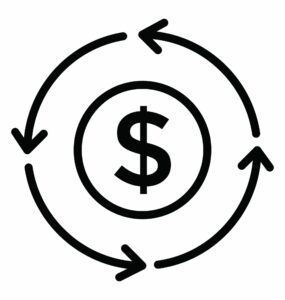Perhaps you’re trying out your own marketing plan or you might have hired an out house agency to develop a comprehensive marketing plan for your dealership. Either way, it’s a big move to invest in a digital marketing strategy, so it’s no surprise that you want to get the most amount of bang for your buck. The fact though is that automotive digital marketing is not a one-size-fits-all solution. Every dealership has its own success formula without a single definition equation that measures success. According to a recent Demand Metric study, nearly twenty percent of event marketers do not have a clear understanding of how to properly measure or track their event ROI. So, how can you tell whether you’re getting the highest return possible on your digital marketing investment? How do you know whether your marketing efforts are helping to move the metal on the lot? How can you then connect your online efforts to the in-store actions? There are a few key metrics that you should be measuring to ensure that your dealership is earning a positive return on investment (ROI). But first, we should talk about what exactly is ROI?
What Is Return on Investment (ROI)?
ROI is a profitability indicator that is usually expressed in the form of a percentage. The metric is designed to help businesses make decisions regarding any refining to their digital marketing campaigns, adjusting budget allocation, and making future investments.
In the simplest terms, ROI is a measurement that shows the amount of money you’re making from the direct result of the digital marketing investment of your dealership. This number should be a positive number for you to be making a profit.
If your dealership’s ROI is a negative number, then that is not a good sign. A negative number states that you are losing money on your marketing efforts. It’s a good sign that you need to revisit and adjust your marketing strategy.

How Should You Measure Your ROI?
Measuring your ROI is a complicated process. Dealers often want completely clear data that clearly connects their online marketing efforts to all in-store actions. Due to vehicles not being sold online, it can be quite tricky to attribute online marketing efforts to specific in-store sales. Though digital marketing provides dealerships with a fair number of easily measurable results, such as conversions, click through rates, web traffic, etc., measuring Return On Ad Spends (ROAS) and ROI is typically out of the realm of possibility for many dealers. That does depend and rely on the internal processes of the dealership (i.e. up to date and accurate CRM data). Dealerships have the ability to make correlations between online digital marketing efforts and vehicle sales by compared metrics, such as the VDP views by source (i.e. views generated categorized specifically by campaign or event) of a particular model. When that specific vehicle has received high interest in the store and the VDP views are high, dealers are able to connect vehicles sales to the digital marketing efforts. Though that might still be a hazy connection as other factors are also in play during this time.
3 Ways To Increase Your Events ROI
If you’re using a mobile event app or an online registration platform, you probably already have an abundance of data at your fingertips. Below are three ways for you to increase your ROI for your dealership events.
- Advertise More Efficiently
At the commencement of your event’s development cycle, you should be focused on retaining all the past attendees as well as continue to reach out to new ones. This starts from the moment that your event goes on sale till the day that all the attendees arrive. In order for you to get the most of the event’s promotional budget, you should look at the event data that your registration platform surely provides. Aim to evaluate the traffic that your event registration page receives to determine where users found out about your event. Divide that report into three categories, by time, ticket type, and source. In terms of time, the report will show the data and time the visitors registered for your event. In terms of ticket type, the report should show the which registration type the attendee chose to purchase (e.g. VIP vs Early Bird). In terms of source, the report should show which source can be attributed to the sale (i.e. email, social media, etc.). For example, if your event reports point out that Facebook Ads are the source driving the highest amount of traffic to your events website, but also that those are not the people that are signing up. Instead, there is another marketing channel or social network that’s more successful in converting interested consumers into paid attendees. In this situation, you might want to consider reallocating some of your marketing spend into that channel to see a higher ROI.
- Optimize Event Procedures
Try to use a mix of data from your mobile event app and registration platform to prevent any logistical mishaps from diluting the experience of your attendees. Similar to before, split your reports into two categories, those being check-ins by time and device and top interests and content. In terms of the check-ins, the report should show the speed at which the traffic is flowing into your venue (i.e. whether it’s fast or slow). This is especially important for events that are held in a venue with multiple entrances or larger scale events that are being held in large conference halls. The ability to monitor the traffic in real time and check in devices can help to ensure that attendees enjoy the experience as soon as possible. In terms of the top interests and content, the report should show which discussions, sessions, and speakers, the attendees are actively engaging in. Monitoring the attendee activity can help you to find out whether the events are in the right rooms. So, you might find that a session you assumed would only have marginal attendance, instead needs to be in the largest possible room.
- Appraise The Event’s Success
Once all the books are closed and your event ends, it’s time to analyze your event data one more time to ensure that you have the data needed to improve your next event. This report, similar to the last two, should be divided into two categories, speaker and session ratings and returning v. new attendees. In terms of the speaker and sessions rating, this report should show the data of which speakers or sessions the attendees disliked and which they liked. Use that data to find what parts didn’t meet the expectations of the attendees and inform your event agenda for the next time. In terms of the returning versus new attendees, this report should allow you to see the number of attendees that attended previous events as well as how many individuals are new. There should be a healthy mix of returning and new attendees to gauge whether your event is growing. Retaining attendees also costs less than acquiring new attendees. All of this data can help you to change the way your measuring and claiming success in a rapidly growing and changing industry. Following these tips can help you to get ahead of the competition while still offering your customers the highest possible service in and out of the dealership.








